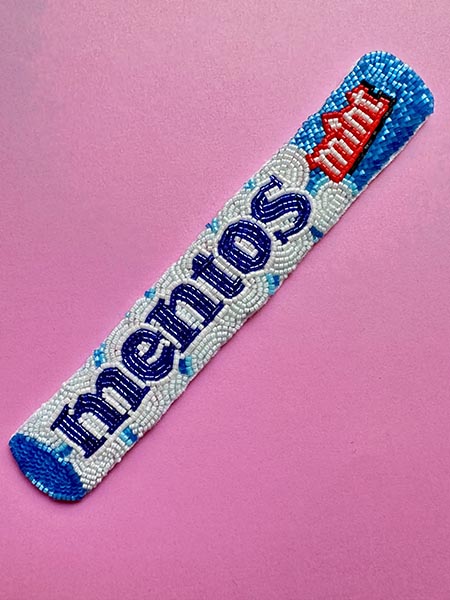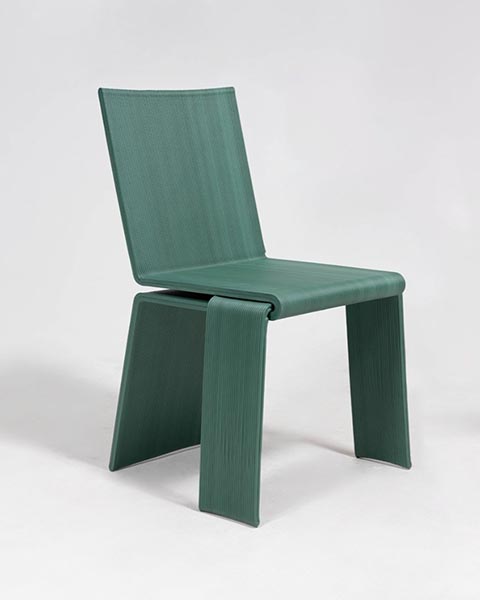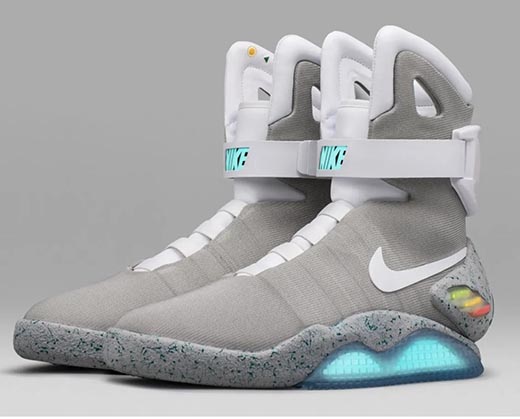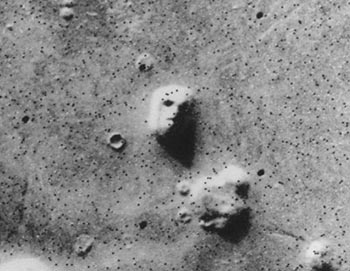
Drawing a Bead
Snack food packaging. It’s ubiquitous, and we rarely give it more than a passing glance, save to determine if it the snack in question is “cool ranch” flavored, “salt and vinegar,” “essence of arsenic,” etc. However, via Print magazine, one artist has drawn inspiration from snack packaging and has launched “The Beaded Bodega.”
[Vi] Nguyen is the artist behind Beaded Bodega, a project in which she recreates the packaging of beloved snack items in hand-beaded form. As an ode to her Vietnamese heritage, New York City bodegas and handcraft, Nguyen’s creations illuminate the beauty of junk food packaging that’s otherwise overlooked. In doing so, she has amassed a robust following of fellow snack lovers, tapping into the nostalgia inherent in these products and charming all manner of sweet tooths beyond.

Diving into this new art, I saw a lot of incredible wearable beadwork out there, but knew that wasn’t my personal style. For me, there was no sense in creating something you wouldn’t wear yourself or enjoy making. I wanted to make something that felt “me,” but could still connect to others. As someone fueled by snacks, that’s what truly resonated with me, and I could only hope it would with others— and to my delight, it did!

Three Chairs for Design
Looking for a new chair that’s easy to assemble? Via Core77, try the 3D-printed Som, by industrial designer Eva Dugintseva.
It’s made from recycled polystyrene and was produced on a Kuka 3D printer. The chair doesn’t require any fasteners to assemble; you simply slide the parts together.

“It can be used both outdoors and indoors. The chair has the same length of the back and bottom parts, so it is possible to turn it upside down if needed. To remove the leg, lean Som forward and pull it out. The plastic surface does not require special cleaning products and can be washed with water and soap. Som chair can hold up to 150 kg and pigments in the plastic do not fade even under the direct sun.”
Mox Populi
Via Laughing Squid, Eric Bailey of Tiny Bookshelf and artist mox created “Super Moxio Bros”, a SuperMario Bros tribute game created using typewriter characters.

It can be played inside a Chrome browser with a keyboard.
Dinner Gets Cold
It’s obviously nothing we could live without today, but more than a century ago, the idea of refrigerated food was terrifying. Via Atlas Obscura, one of the most frightening meals ever prepared was the so-called “Cold Storage Banquet” in 1911. Held on October 23 in the Louis XVI room in Chicago’s posh Hotel Sherman, 400 well-heeled guests sat down to the first feast in which all the ingredients had been refrigerated and not, as we would say today, farm fresh.
Neither the eggs in the egg salad, nor the apples in the apple pie were fresh from any farm. “Everything but the olives in the dry martinis was refrigerated,” says Nicola Twilley, who writes of the banquet in Frostbite: How Refrigeration Changed Our Food, Our Planet, and Ourselves. Twilley’s new book is a sweeping look at the ways in which cold-storage radically overhauled everything from our fundamental concept of flavors to the structures of our cities.
Refrigeration was such a new technology at the time that speakers at the dinner applauded the guests’ courage in actually eating anything. This was a couple of years before commercial refrigerators hit the market and everyone was worried that the food might not be safe.
A great deal of fanfare was made over the true age of the meats, eggs, and fish on the table—and that the ladies present had the bravery to ingest any of it. “Your capon received its summons to the great unknown along about last St. Valentine’s day,” Meyer Eichengreen, the association’s vice president, told the rapt diners.
They don’t make dinner speakers like that anymore. Now, to be fair, some of that anxiety was not unwarranted.
Some of the anxiety was warranted. The Jungle, Upton Sinclair’s explosive novel about rampant unsanitary practices in Chicago’s meatpacking plants, had come out in 1905. The Pure Food and Drug Act only came about a year later, and public trust in corporations to provide food that was safe was still low. As Twilley writes, the third largest cause of death at the turn of the 20th century was gastrointestinal infections and diarrhea.
It’s also hard to overstate how important refrigeration would become.
Until refrigeration came along, a lot of things that modern-day Americans take for granted weren’t possible. By the late 19th century, keeping America’s growing urban populations fed was becoming a logistical nightmare. In order to supply enough meat, farmers brought live animals into the heart of cities like Chicago and Manhattan. “You get these amazing descriptions of trying to herd a flock of turkeys on the road,” Twilley says.
Try to imagine your life without a refrigerator. Chilling, isn’t it? Or not…
Targeting Checks
Not that we’re complaining, having been stuck in store checkout lines behind check writers, but Target is no longer accepting personal checks. Says NBC News:
In a statement to NBC News, the retail giant said it was committed to creating an easy and convenient checkout experience — but that due to "extremely low volumes," it would no longer take personal checks starting July 15.
It said it has taken several measures to notify guests in advance of the move. It will still accept cash; digital wallet payments like Apple Pay; SNAP/EBT; buy now, pay later services; and credit and debit cards.
Customers trying to pay with a check will be publicly shamed.
Hanging In There
Whlist we applaud the creativity and the execution (as it were), perhaps the ramifications of this particular Halloween decoration were not fully thought out.

Says Boing Boing:
The decoration consists of a robotic, life-sized mannequin that looks as if it's holding onto the side of the roof and flailing around. To make it even more realistic, there’s a tipped-over ladder next to the robot.
As one would expect, the neighbors called 911.
For the Kicks
Do you have a pair of Nike’s Adapt BB sneakers? If so, slightly bad news. Via The Verge, Nike is removing the Adapt app from app stores, but the shoes can still be manually operated—
Wait—what in the name of Michael Jordan are we talking about?!
Apparently, the sneakers are self-lacing but Nike is discontinuing them, and the app will no longer be supported. In one of the strangest paragraphs ever written:
Without the app, owners can use the physical buttons on the sneakers to power them on and off, check battery status, tighten or loosen the laces, and save a single preset, but there will be no way to adjust the shoe’s lighting.
Sneakers. Although the lights would be useful for those who run before sunup or after sundown.

The power laces on the Nike Adapt BB basketball shoes, which were worn by athletes like Jayson Tatum and Luka Doncic, were adjustable using buttons on the sneakers themselves or over Bluetooth. The app also allowed users to configure three tightness presets and adjust the color of LED lights on the shoes — features that will continue to function for Adapt BB users who already have the app installed on their phones.
Power laces. App-controlled sneakers. OK, then.
Graphene Is Floored
Was it a good week for graphene news? It’s always a good week for graphene news! Graphene-based underfloor heating. From (who else?) Graphene-Info:
Specialist structural flooring manufacturers Staircraft have been testing the use of Haydale's graphene-based functional ink for application on their innovative chipboard flooring system. Significant investment has reportedly been made to get the new flooring system to adopt a heating solution that is cost effective and easy to install.
… Numerous ink alternatives were used throughout the trial and Staircraft Project Manager, Dr. Luke Whale, said of the Haydale offering: "We were unsure at first if the concept would work. We have tried a number of inks from different suppliers, and the Haydale formulation has come out on top. The consistency and usability of Haydale's flexible conductive ink has impressed me and the technical team. The tests so far have proven that this new innovation in heated flooring is energy efficient and effective, and we are excited about its potential."

It is said to use low voltages, and will hopefully provide a controllable and energy efficient method of heating one’s home.
Are Cars Electric?
If you have ever walked through a parking lot and turned around suddenly to see a car coming at you that you had not heard coming, you know that the ongoing challenge with electric cars is to give them some kind of noise, so they are not terrifyingly stealthy. But what kind of noise?
Vox’s Christophe Haubursin spoke with sound designers who explained the unique challenge of making realistic car sounds for electric vehicles. After all, say what you want about ICE vehicles, but at least you can hear them coming. And the problem is only exacerbated if you are visually impaired.
One solution, promoted by organizations for the visually impaired, was legislation that required electric vehicle companies to install skeuomorphic sounds in cars through hidden speakers. Called Acoustic Vehicle Alerting Systems (AVAS), they “had to meet certain sonic criteria. But they were also a blank slate for sound designers to decide how the cars of the future should sound.”
The Minimoog riff from Gary Numan’s “Cars” seems appropriate…
Around the Webb, Part the Infinity: Collision!
The James Webb Space Telescope captured two massive asteroids colliding in a nearby star system. Says LiveScience:
The James Webb Space Telescope (JWST) has found evidence of two giant asteroids slamming into each other in a nearby star system. The colossal collision ejected 100,000 times more dust than the impact that killed the dinosaurs.

The violent impact occurred recently in Beta Pictoris, a star system located 63 light-years away in the constellation Pictoris.
Beta Pictoris is pretty young as far as star systems go—20 million years old compared to our solar system’s 4.5 billion years.
Because it is still very young, the star system's circumstellar debris disk — the vast ring of gas and dust surrounding the star — is a significantly more violent place than our own, making it the perfect place for astronomers to study the tumultuous early years of planet-forming systems. The team added that their findings could offer a rare insight into the history of our own solar system.
The things we can do.
But Wait, There’s S’Mores
Do like sitting around a campfire or outdoor firepit? If so, do you like s’mores? If so, you can thank the Industrial Revolution. Huh? The Conversation converses about the history of the s’more or, specifically the various elements that comprise the s’more as well as the method of preparation.
The oldest element of a s’more—theoretically—is the marshmallow. It does actually derive from a plant.
Marsh mallow, or Althea officinalis, is a plant indigenous to Eurasia and Northern Africa. For thousands of years, the root sap was boiled, strained and sweetened to cure sore throats or simply be eaten as a treat.
The original process for turning the sap into the white puffy comestible we know was laborious and time consuming and only the wealthy could afford them. But:
By the mid-19th century, the process had become mechanized and machines could make them so cheaply that they were included in most penny candy selections. Today the marshmallow on your s’more contains no marsh mallow sap at all. It’s mostly corn syrup, cornstarch and gelatin.
Chocolate has of course been consumed for at least 3,000 years…
But again, it was the Industrial Revolution that made chocolate cheap enough and palatable enough for the average person. The chocolate that the Mesoamericans ate was dark, grainy and tended to be somewhat bitter.
In 1875, a candlemaker-turned-chocolatier named Daniel Peter invented a process to mix milk with chocolate. He then added some more sugar, and the modern milk chocolate bar was born. Peter’s company eventually merged with Henri Nestle’s two companies, and Peter’s invention was dubbed the Nestle chocolate bar. It proved to be so much more popular than the darker bars on the market that other candy companies, from Cadbury to Hershey, released their own versions.
And final ingredient:
Finally, the graham cracker was invented by the Presbyterian minister Sylvester Graham, who felt that a vegetarian diet would help suppress carnal urges, especially the scourge of “self-pollution.”
Perhaps it depends on what you actually do with the graham cracker…
So how did all these three items come together?
The first mention of this treat is in a 1927 edition of the Girl Scout manual “Tramping and Trailing with the Girl Scouts.” In a nod to the treat’s addictive qualities, it was dubbed “Some More.”
The term s'more is first found the 1938 guide “Recreational Programs for Summer Camps,” by William Henry Gibson. Some think the s'more may be a homemade version of the Mallomaror the moon pie, two snacks introduced in the 1910s.
And there you have it. Bon appetit!
In a Pickle
No. Just no. Pickle cupcakes are now a thing. Via Food & Wine:
The Claussen x Baked by Melissa Pickle Cupcake, released today, July 10, in honor of National Pickle Month, is described in the press release as “a dill-icious pickle-infused cake and pickle buttercream icing complete with festive red and white sprinkles on top.” The bite-sized treats will be sold in packs of six at Baked by Melissa locations (there are 14 stores across New York City and Boston) for $10.25. But you don’t have to live near a store to get a taste — customers can purchase 25-packs online for nationwide shipping at a cost of $37.
No, we can’t.
This Week in Printing, Publishing, and Media History
July 22
1598: William Shakespeare’s play The Merchant of Venice is entered on the Stationers’ Register. By decree of Queen Elizabeth, the Stationers’ Register licensed printed works, giving the Crown tight control over all published material.
1893: Katharine Lee Bates writes "America the Beautiful" after admiring the view from the top of Pikes Peak near Colorado Springs, Colo.
1898: American poet, short story writer, and novelist Stephen Vincent Benét born.
1932: American novelist Tom Robbins born.
1967: American poet and historian Carl Sandburg dies (b. 1878).
July 23
1829: In the United States, William Austin Burt patents the typographer, a precursor to the typewriter.
1888: American crime novelist and screenwriter Raymond Chandler born.
1903: The Ford Motor Company sells its first car.
1957: English comedian, actress, and screenwriter Jo Brand born.
1962: Telstar relays the first publicly transmitted, live trans-Atlantic television program, featuring Walter Cronkite.
July 24
1847: Richard March Hoe patented the rotary-type printing press.
1895: English poet, novelist, and critic Robert Graves (I, Claudius and Claudius the God) born.
1900: Zelda Fitzgerald, American author, poet, and wife/drinking buddy of F. Scott Fitzgerald born.
1901: Author O. Henry is released from prison in Columbus, Ohio, after serving three years for embezzlement from a bank. The ending was not a surprise.
1969 : Apollo 11 splashes down safely in the Pacific Ocean.
July 25
1834: English philosopher, poet, and critic Samuel Taylor Coleridge dies (b. 1772).
1837: The first commercial use of an electrical telegraph is successfully demonstrated in London by William Cooke and Charles Wheatstone.
1965: Judas! Bob Dylan goes electric at the Newport Folk Festival.
1976: Viking 1 takes the famous Face on Mars photo.

July 26
1502: German printer Christian Egenolff born.
1856: Irish playwright, critic, and Nobel Prize laureate George Bernard Shaw, born.
1887: Publication of the Unua Libro, founding the Esperanto movement.
1894: English novelist and philosopher Aldous Huxley born.
1928: American director, producer, screenwriter, and cinematographer Stanley Kubrick born.
1989: A federal grand jury indicts Cornell University student Robert T. Morris, Jr. for releasing the Morris worm, thus becoming the first person to be prosecuted under the 1986 Computer Fraud and Abuse Act.
July 27
1866: The first permanent transatlantic telegraph cable is successfully completed, stretching from Valentia Island, Ireland, to Heart's Content, Newfoundland. They could now communicate with each other to their heart’s content.
1940: What’s up, Doc? The animated short A Wild Hare is released, introducing the character of Bugs Bunny.
1938: Gary Gygax, creator of Dungeons & Dragons, born.
July 28
1844: English poet Gerard Manley Hopkins born.
1866: At the age of 18, Vinnie Ream becomes the first and youngest female artist to receive a commission from the United States government for a statue (of Abraham Lincoln).















Discussion
Only verified members can comment.